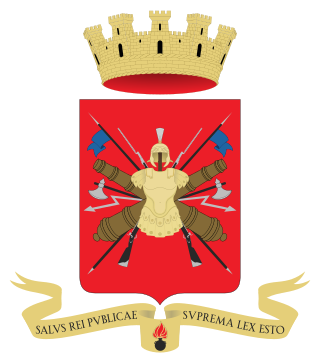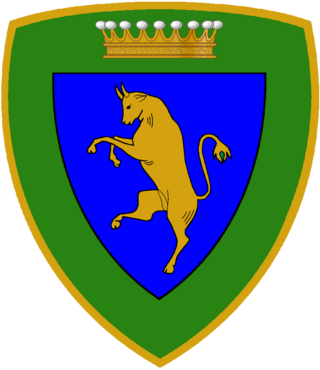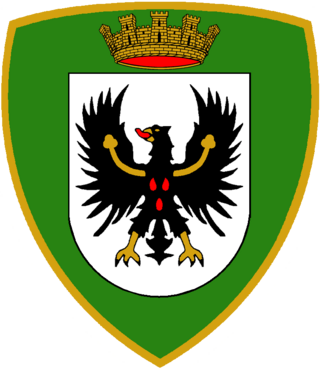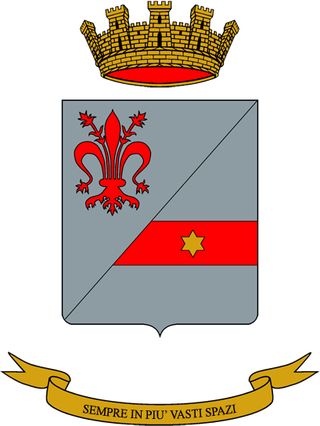
The Italian Army is the land force branch of the Italian Armed Forces. The army's history dates back to the Italian unification in the 1850s and 1860s. The army fought in colonial engagements in China, Libya, Northern Italy against the Austro-Hungarian Empire during World War I, Abyssinia before World War II and in World War II in Albania, Balkans, North Africa, the Soviet Union, and Italy itself. During the Cold War, the army prepared itself to defend against a Warsaw Pact invasion from the east. Since the end of the Cold War, the army has seen extensive peacekeeping service and combat in Afghanistan and Iraq. Its best-known combat vehicles are the Dardo infantry fighting vehicle, the Centauro tank destroyer and the Ariete tank and among its aircraft the Mangusta attack helicopter, recently deployed in UN missions. The headquarters of the Army General Staff are located in Rome opposite the Quirinal Palace, where the president of Italy resides. The army is an all-volunteer force of active-duty personnel.

The 5th Alpini Regiment is a regiment of the Italian Army's mountain infantry speciality, the Alpini, which distinguished itself in combat during World War I and World War II. The regiment is based in Sterzing and assigned to the Alpine Brigade "Julia".

The Alpine Brigade "Cadore" was a light Infantry brigade of the Italian Army, specializing in mountain warfare. Its core units were Alpini, the mountain infantry corps of the Italian Army, that distinguished itself in combat during World War I and World War II. The brigade was based in the Italian provinces of Belluno and Vicenza with its headquarters Belluno. The brigade was disbanded in 1997.

The Alpine Brigade "Julia" is a light infantry brigade of the Italian Army, specializing in mountain warfare. Its core units are Alpini, an infantry corps of the Italian Army, that distinguished itself during World War I and World War II. The brigade carries on the name and traditions of the 3rd Alpine Division "Julia". The division's and brigade's name allude to the Julian Alps in the Friuli region where the division's regiments recruited their troops, and where after World War II the brigade was based. Accordingly, the brigade's coat of arms is modeled after the Friuli region's coat of arms.

The Alpine Brigade "Orobica" was a light Infantry brigade of the Italian Army, specializing in mountain warfare. Its core units were Alpini, the mountain infantry corps of the Italian Army, that distinguished itself in combat during World War I and World War II.

The Alpine Brigade "Taurinense" is a light Infantry brigade of the Italian Army, specializing in Mountain Combat. Its core units are Alpini, the mountain infantry corps of the Italian Army, that distinguished itself in combat during World War I and World War II. The brigade's name "Taurinense" alludes to the Roman name Augusta Taurinorum for the city of Turin around which the brigade is based. Accordingly the brigade's coat of arms is modeled after Turin's coat of arms. The brigade carries on the name and traditions of the 1st Alpine Division "Taurinense".

The Alpine Brigade "Tridentina" was a light Infantry brigade of the Italian Army, specializing in mountain warfare. Its core units were Alpini, the mountain infantry corps of the Italian Army, that distinguished itself in combat during World War I and World War II. The Alpine Brigade "Tridentina" carried on the colours and traditions of the WWII 2nd Alpine Division "Tridentina".

The 2nd Mountain Artillery Regiment is an inactive mountain artillery regiment of the Italian Army, which was based in Trento in Trentino. The regiment was formed in 1915 by the Royal Italian Army as 3rd Mountain Artillery Regiment. In World War I the regiment's groups and batteries served on the Italian front.

The 5th Mountain Artillery Regiment is an inactive mountain artillery regiment of the Italian Army, which was based in Meran in South Tyrol. The regiment was formed in 1935 by the Royal Italian Army with batteries that had served in World War I. The regiment was assigned to the 5th Alpine Division "Pusteria", with which it served in the Second Italo-Ethiopian War and during World War II in the invasion of France and the Greco-Italian War. After the invasion of Yugoslavia the regiment served as occupation force in Montenegro. In 1943 the regiment was transferred to the South of occupied France. After the announcement of the Armistice of Cassibile on 8 September 1943 the regiment was disbanded by invading German forces.

The 2nd Alpine Signal Regiment is a deployable signals regiment of the Italian Army based in Bolzano in South Tyrol that specializes in mountain warfare. Since 1951 it has been assigned of the 4th Alpine Army Corps and therefore a strong association with the army's mountain infantry speciality, the Alpini, with whom the regiment shares the distinctive Cappello Alpino. The unit was first active from 1926 to 1932 as 2nd Radio-Telegraphers Regiment.

The 3rd Alpine Division "Julia" was a division of the Royal Italian Army during World War II, which specialized in mountain warfare. The Alpini that formed the divisions are a highly decorated, elite mountain corps of the Italian Army comprising both infantry and artillery units. Today the traditions and name of the 3rd Alpine Division "Julia" are carried on by the Alpine Brigade "Julia".

The 2nd Alpine Division "Tridentina" was a division of the Royal Italian Army during World War II, which specialized in mountain warfare. The Alpini that formed the divisions are a highly decorated and elite mountain corps of the Italian Army comprising both infantry and artillery units. The name Tridentina was chosen as the division was based in the Trentino-South Tyrol region, for which the fascist regime of Benito Mussolini had created the neologism Venezia Tridentina. After World War II, the traditions and name of the 2nd Alpine Division "Tridentina" were carried on by the Alpine Brigade "Tridentina".

The Comando Truppe Alpine or COMTA commands the Mountain Troops of the Italian Army, called Alpini and various support and training units. It is the successor to the 4º Corpo d'Armata Alpino of the Cold War. The Alpini are light Infantry units specializing in Mountain Combat. The subordinate units of the COMTA distinguished themselves during combat in World War I and World War II.

The 2nd Engineer Regiment is a military engineer regiment of the Italian Army based in Trento in Trentino. Founded in 1860 it is currently the oldest active engineer regiment of the Italian Army. Since 1954 it has been part of the 4th Alpine Army Corps and therefore has a strong association with the army's mountain infantry corps, the Alpini, with which the regiment shares the distinctive Cappello Alpino. Today the regiment is the engineer unit of the Alpine Brigade "Julia" and specializes in mountain combat.
The article provides an overview of the entire chain of command and organization of the Italian Army after the reform of 1 May 2024 and includes all active units as of 1 May 2024. The Armed Forces of Italy are under the command of the Italian Supreme Defense Council, presided over by the President of the Italian Republic. The Italian Army is commanded by the Chief of the Army General Staff or "Capo di Stato Maggiore dell’Esercito" in Rome.

The Division "Acqui" Italian: Divisione "Acqui" is one of three active divisions of the Italian Army. The division is the army's high readiness command for out-of-area operations. The Acqui is based in Capua in the Province of Caserta and assigned to the Operational Land Forces Command. The division carries on the name and traditions of the World War II Royal Italian Army 33rd Infantry Division "Acqui" and the Cold War Italian Army Motorized Brigade "Acqui".

The 4th Engineer Regiment is a military engineer regiment of the Italian Army based in Palermo in Sicily. Today the regiment is the engineer unit of the Mechanized Brigade "Aosta".
The 8th Marching Division was a short-lived division of the Royal Italian Army during World War II. In the Italian military the term "Marching" refers to temporary units based in Italy to manage replacements for the operational units at the front.

The 87th Infantry Regiment "Friuli" is an active unit of the Italian Army based in Bologna in the Emilia-Romagna. The regiment is named for the region of Friuli and part of the Italian Army's infantry arm. On 4 October 2022 the name, flag and traditions of the regiment were assigned to the Command and Tactical Supports Unit "Friuli" of the Airmobile Brigade "Friuli".

The 4th Army Corps Auto Group "Claudia" is an inactive military logistics battalion of the Italian Army, which was based in Eppan in South Tyrol. Originally a transport regiment of the Royal Italian Army, the unit was last active from 1976 to 1982. The regimental anniversary falls, as for all units of the Transport and Materiel Corps, on 22 May, the anniversary of the Italian Army's first major automobile use to transport reinforcements to counter the Austro-Hungarian Offensive at Asiago in 1916.


















